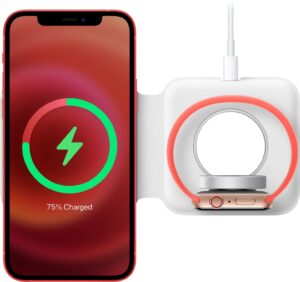Looking to understand what car batteries are made of? You’ve come to the right place! Car batteries play a crucial role in supplying power to your vehicle, but have you ever wondered what components make up this vital part? In this article, we’ll delve into the composition of car batteries, unraveling the mystery behind their construction. Let’s dive in and explore the fascinating world of “what is car battery made of” without wasting any time!
What is a Car Battery Made Of?
When you’re driving your car, have you ever wondered what makes it turn on and keep running smoothly? While there are many important components in a car, one crucial element is the car battery. The car battery provides the necessary electrical energy to start the engine and power various electrical systems in the vehicle. But what exactly is a car battery made of? In this article, we will delve into the composition of a car battery and explore the different materials used in its construction.
The Basics: How a Car Battery Works
Before we dive into the specifics, let’s quickly touch upon how a car battery functions. A car battery is essentially a rechargeable device that stores electrical energy. It is made up of a series of electrochemical cells that convert chemical energy into electrical energy through a chemical reaction.
When you turn the ignition key, the battery sends an electrical current to the starter motor, which then activates the engine. Additionally, the car battery powers various electrical components such as the lights, radio, and air conditioning system when the engine is off.
The Key Components of a Car Battery
Now, let’s take a closer look at the materials and components that make up a typical car battery:
1. Casing
The outer casing of a car battery is typically made of a durable and heat-resistant plastic material, such as polypropylene. This casing protects the internal components from damage and also helps contain any potential leaks.
2. Plates
Inside the car battery, you’ll find positive and negative plates made of lead or a lead alloy. These plates are coated with a paste-like substance, known as active materials, which facilitate the chemical reactions responsible for electricity generation. The active material on the positive plate is lead dioxide (PbO2), while the active material on the negative plate is sponge lead (Pb).
3. Separator
A separator is a thin material placed between the positive and negative plates to prevent them from touching and causing a short circuit. It is typically made of a porous material, such as polyethylene or glass fiber, which allows the flow of ions between the plates while keeping them physically separated.
4. Electrolyte
The electrolyte is a liquid or gel-like substance that enables the flow of ions between the positive and negative plates. In traditional lead-acid batteries, the electrolyte is a mixture of sulfuric acid (H2SO4) and water. The electrolyte plays a crucial role in the chemical reactions that occur during battery operation.
5. Terminals
The terminals of a car battery serve as the connection points for electrical cables. They are typically made of lead or lead alloy and provide a secure contact for transferring electrical energy between the battery and the vehicle’s electrical system.
Types of Car Batteries
Although the basic components of a car battery remain the same, there are different types of car batteries available, each with its own variations in materials and construction. Some common types of car batteries include:
1. Flooded Lead-Acid (FLA) Batteries
Flooded lead-acid batteries are the traditional type of car batteries commonly found in older vehicles. These batteries contain a liquid electrolyte and require periodic maintenance, such as checking the electrolyte level and topping it up with distilled water if necessary.
2. Absorbent Glass Mat (AGM) Batteries
AGM batteries are a more advanced type of lead-acid battery. Instead of a liquid electrolyte, they use a fiberglass mat soaked in electrolyte, making them spill-proof and maintenance-free. AGM batteries are known for their high durability, resistance to vibration, and ability to deliver high bursts of power.
3. Lithium-Ion (Li-ion) Batteries
Lithium-ion batteries, commonly found in hybrid and electric vehicles, are becoming increasingly popular in the automotive industry. They offer a higher energy density, longer lifespan, and lighter weight compared to traditional lead-acid batteries. However, they are more expensive.
4. Lithium-Iron Phosphate (LiFePO4) Batteries
LiFePO4 batteries are a specific type of lithium-ion battery known for their enhanced safety, stability, and long cycle life. They have a lower energy density compared to other lithium-ion batteries but are more suitable for applications where safety is a top priority.
Recycling Car Batteries
Car batteries contain toxic and hazardous materials, such as lead and sulfuric acid, which can harm the environment if not disposed of properly. Fortunately, car battery recycling programs are in place to ensure their safe and responsible handling.
Recycling car batteries helps recover valuable materials and reduces the environmental impact of extracting and processing new materials. Lead from recycled car batteries can be reused in the production of new batteries, while other components like plastic and electrolyte can be repurposed or disposed of safely.
In Conclusion
Understanding what a car battery is made of can give you a better appreciation for its importance in keeping your vehicle running smoothly. From the casing to the plates, electrolyte, and terminals, each component plays a vital role in generating and storing electrical energy. Whether you have a traditional lead-acid battery or a more advanced lithium-ion battery, proper maintenance and recycling are essential for ensuring their longevity and minimizing their environmental impact. So, the next time you start your car, remember the impressive chemistry happening inside your car battery to bring your vehicle to life.
Frequently Asked Questions
What materials are car batteries typically made of?
Car batteries are typically made of lead-acid, which consists of lead plates and an acid electrolyte solution. The lead plates serve as the main component for storing and releasing electrical energy, while the acid electrolyte solution facilitates the chemical reaction that generates this energy.
Are there any other components involved in car battery construction?
In addition to the lead-acid core, car batteries also contain other materials such as plastic housing, terminal posts, and connectors. The plastic housing encloses the battery and provides insulation, while the terminal posts and connectors allow for electrical connections to be made.
How are the lead plates in a car battery made?
The lead plates in a car battery are manufactured by casting a lead-alloy mixture into grids. These grids are then filled with lead oxide paste, which is the active material responsible for the chemical reactions that produce electrical energy.
What is the purpose of the acid electrolyte solution in a car battery?
The acid electrolyte solution, usually sulfuric acid diluted with water, acts as a conductor for the flow of electrical charge between the lead plates. It enables the chemical reactions that occur during the battery’s charging and discharging processes.
Are there any environmental concerns associated with car batteries?
Car batteries contain lead, which is a toxic heavy metal. As a result, proper disposal and recycling of used car batteries are essential to prevent environmental contamination. Many countries have regulations in place to ensure the responsible handling of car batteries to minimize their impact on the environment.
Final Thoughts
Car batteries are made up of a combination of materials. The main components include lead, lead dioxide, and an electrolyte solution, typically made of sulfuric acid and water. These materials work together to generate and store electrical energy in the form of chemical reactions. Lead and lead dioxide serve as the electrodes, while the acid acts as the conductive medium. With the help of these components, car batteries provide the necessary power to start the vehicle’s engine and operate its electrical systems. So, when it comes to understanding what car batteries are made of, these key ingredients play a vital role in their functioning and performance.




